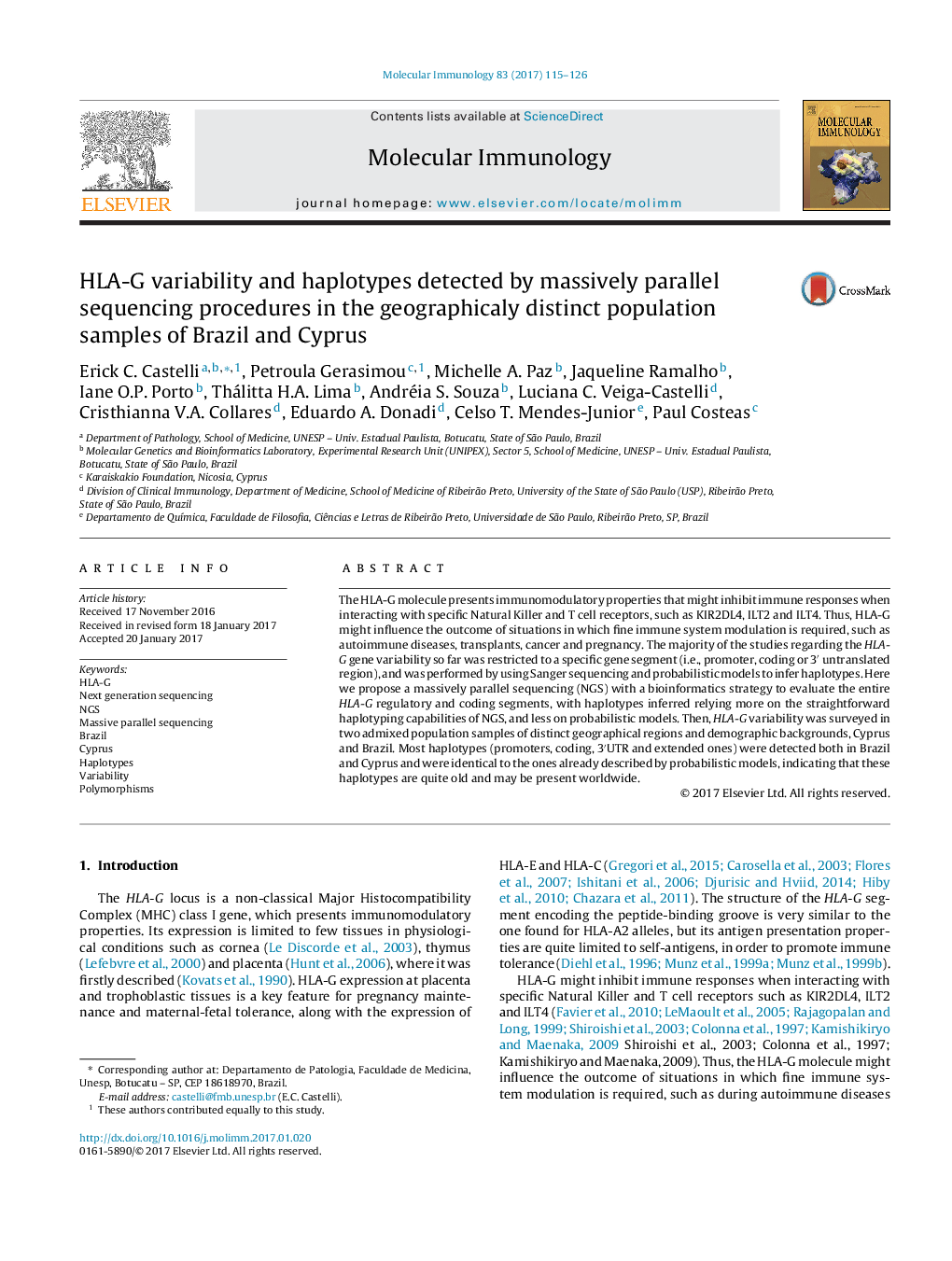| Article ID | Journal | Published Year | Pages | File Type |
|---|---|---|---|---|
| 5591946 | Molecular Immunology | 2017 | 12 Pages |
Abstract
The HLA-G molecule presents immunomodulatory properties that might inhibit immune responses when interacting with specific Natural Killer and T cell receptors, such as KIR2DL4, ILT2 and ILT4. Thus, HLA-G might influence the outcome of situations in which fine immune system modulation is required, such as autoimmune diseases, transplants, cancer and pregnancy. The majority of the studies regarding the HLA-G gene variability so far was restricted to a specific gene segment (i.e., promoter, coding or 3â² untranslated region), and was performed by using Sanger sequencing and probabilistic models to infer haplotypes. Here we propose a massively parallel sequencing (NGS) with a bioinformatics strategy to evaluate the entire HLA-G regulatory and coding segments, with haplotypes inferred relying more on the straightforward haplotyping capabilities of NGS, and less on probabilistic models. Then, HLA-G variability was surveyed in two admixed population samples of distinct geographical regions and demographic backgrounds, Cyprus and Brazil. Most haplotypes (promoters, coding, 3â²UTR and extended ones) were detected both in Brazil and Cyprus and were identical to the ones already described by probabilistic models, indicating that these haplotypes are quite old and may be present worldwide.
Keywords
Related Topics
Life Sciences
Biochemistry, Genetics and Molecular Biology
Molecular Biology
Authors
Erick C. Castelli, Petroula Gerasimou, Michelle A. Paz, Jaqueline Ramalho, Iane O.P. Porto, Thálitta H.A. Lima, Andréia S. Souza, Luciana C. Veiga-Castelli, Cristhianna V.A. Collares, Eduardo A. Donadi, Celso T. Mendes-Junior, Paul Costeas,
